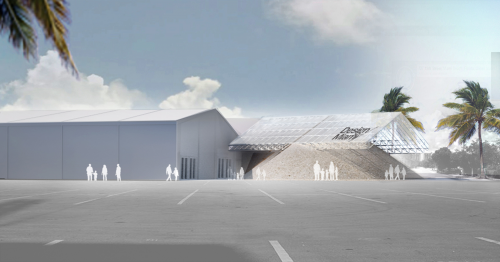Formlessfinder. Design miami 2013.
 tent pile | formlessfinder | 2013 / click > enlarge
tent pile | formlessfinder | 2013 / click > enlarge
Since 2008, Design Miami/ has commissioned emerging architecture practices to design unique architectural experiences at the fair. For Design Miami/ 2013, formlessfinder fabricated a pavilion using a material near and dear to the residents and visitors of Miami: sand.
NYC-based formlessfinder is composed of Garrett Ricciardi and Julian Rose. An experimental laboratory and theory studio, their practice is described as “formless,” where materials, construction, and user and landscape interactions take precedent over the formal shape of a building or structure. Though they produce manifestos and missives (and have a forthcoming book), the studio employs heady concepts in very real ways.
“Form is often the default lens for thinking about architecture. Even when people think they’re talking about something else, like function or structure, there’s often some kind of formal idea underlying the discussion. We’re trying to shift away from form so that we can explore other qualities of architecture, such as new ways of experiencing space or innovative ways of using materials,” explains Rose.

Their pavilion for this year’s fair, TENT PILE, will have a foundation of 500 tons of sand supporting a custom-milled aluminum cantilevered roof. After researching the unique geology and geography of Miami, formlessfinder found it intriguing that much of the city’s architecture sits on this ever shifting material. Inspired by the fluidity required of local building techniques and the city’s unique tropical-modern architecture, formlessfinder designed a tribute that displays the unexpected possibilities of materials.
Sand, which is so often a problem of great concern, is turned into an advantage. It will be used to support the aluminum roof in lieu of an excavated foundation, and will also be completely re-usable after the fair is over.
To design the roof and subsequent seating, the architects enlisted the support of Alcoa, a major producer of materials and industrial design, and third-generation aluminum fabricator Neal Feay. Both were integral in the realization of the ambitious truss design of the roof, executed in raw aluminum.

The pavilion will be a refuge for the more than 50,000 visitors who come to Miami for the fairs each year. It is intended as a public installation that marries the practical requirements of shelter and seating to spectacular creative architectural ideas. “We’re hoping to create something that people would want to participate in,” says Ricciardi, and the result is a structure designed to be occupied and explored, as much as it is to be admired. [ designmiami log ] [ design miami/ ] [ formlessfinder ] [ @designmiami #designmiami ]
[ design gtalleries ] Antonella Villanova/ FlorenceCarpenters Workshop Gallery/ London & Paris
Casati Gallery/ Chicago
Cristina Grajales Gallery/ New York
Demisch Danant/ New York
Didier Ltd/ London
Erastudio Apartment-Gallery/ Milan
Fine Art Silver/ Brussels
Gabrielle Ammann // Gallery/ Cologne
Galerie BSL/ Paris
Galerie Downtown – François Laffanour/ Paris
Galerie Jacques Lacoste/ Paris
Galerie Maria Wettergren
Galerie kreo/ Paris
Galerie Patrick Seguin/ Paris
Gallery SEOMI/ Seoul & Los Angeles
ostler Burrows/ New York
Jason Jacques Inc/ New York
Jousse Entreprise/ Paris
Louisa Guinness Gallery/ London
Magen H Gallery/ New York
Mark McDonald/ Hudson
Moderne Gallery/ Philadelphia
Ornamentum/ Hudson
Pierre Marie Giraud/ Brussels
Priveekollektie Contemporary Art + Design/ Heusden aan de Maas
R 20th Century/ New York
Sebastian + Barquet/ New York
Victor Hunt Designart Dealer/ Brussels [ design on/site galleries ] ArtFactum Gallery/ Beirut presenting Marc Baroud & Marc Dibeh
Caroline Van Hoek/ Brussels presenting Gijs Bakker
Elisabetta Cipriani/ London presenting Carlos Cruz-Diez
Industry Gallery/ Washington presenting Benjamin Rollins Caldwell
Volume Gallery/ Chicago presenting Jonathan Muecke
Wonderglass/ London presenting Nao Tamura
4 > 8 december | 3 december preview day


